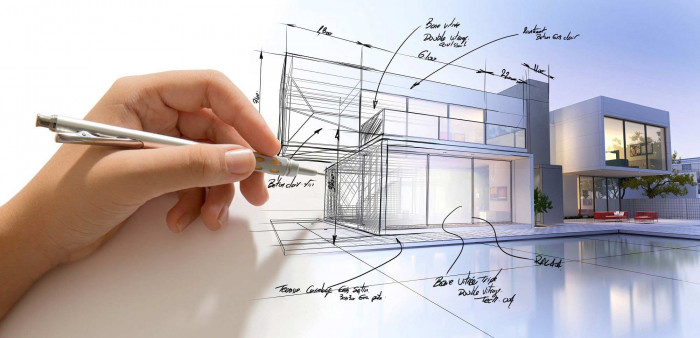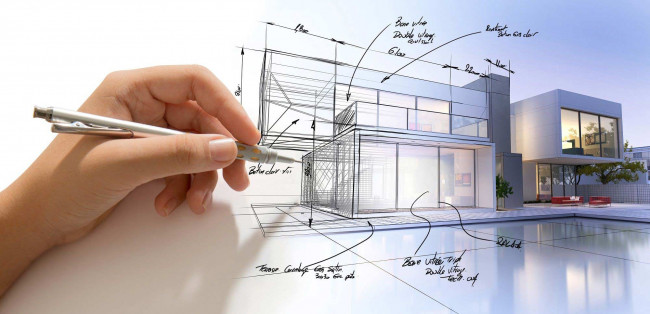Integrating nature into architectural and design projects is paramount for fostering a harmonious and sustainable relationship between the built environment and the natural world. By seamlessly blending elements of nature into the design process, architects and designers can create spaces that promote well-being, environmental consciousness, and a profound connection with the natural world. The significance of incorporating nature into your designs encompasses several key aspects:
Biophilic Design and Human Well-Being:
Integrating natural elements such as greenery, natural light, and organic materials into architectural spaces promotes biophilic design, which is known to enhance human well-being, productivity, and overall quality of life. Access to natural light, views of green spaces, and the incorporation of natural textures and patterns have been linked to reduced stress levels, improved cognitive function, and a heightened sense of tranquility and emotional well-being among building occupants.
Sustainable and Eco-Friendly Practices:
By incorporating nature-inspired design elements, architects and designers can promote sustainability and environmental conservation within their projects. Employing energy-efficient building materials, green building technologies, and passive design strategies that maximize natural ventilation and daylight not only reduce a building's ecological footprint but also contribute to long-term energy savings and operational efficiency, fostering a more sustainable and environmentally responsible built environment.

Cultural and Aesthetic Enrichment:
Integrating nature into design projects allows for the creation of visually appealing and culturally significant spaces that celebrate the beauty and diversity of the natural world. Incorporating natural landscapes, indigenous plants, and artistic representations of local flora and fauna can imbue architectural spaces with a sense of cultural identity, aesthetic richness, and a deeper connection to the natural heritage and biodiversity of the surrounding environment.
Enhanced Connection with the Surrounding Environment:
Designing spaces that seamlessly blend with their natural surroundings fosters a deeper connection between human beings and the ecosystems in which they reside. Creating seamless transitions between indoor and outdoor spaces, incorporating natural ventilation systems, and designing building facades that respond to climatic conditions not only promote a sense of spatial continuity but also encourage a heightened appreciation for the local ecology and natural landscapes.
Promotion of Health and Healing:
Nature-integrated designs have been shown to have a positive impact on physical and mental health, particularly within healthcare and therapeutic environments. Incorporating healing gardens, natural materials, and views of green spaces within healthcare facilities has been associated with reduced patient stress levels, faster recovery times, and an overall improvement in the well-being of patients, visitors, and healthcare professionals alike.
By recognizing and embracing the importance of integrating nature into design practices, architects and designers can create spaces that not only prioritize human well-being and environmental sustainability but also foster a profound sense of connection, cultural enrichment, and holistic harmony between the built environment and the natural world.
Resilient and Adaptive Design Solutions:
Nature-inspired design strategies can contribute to the development of resilient and adaptive architectural solutions that effectively mitigate the impact of environmental challenges such as extreme weather events, climate change, and natural disasters. Implementing green infrastructure, sustainable water management systems, and resilient building materials can enhance a building's capacity to withstand and recover from adverse environmental conditions, ensuring long-term durability and operational resilience.
Community Engagement and Social Cohesion:
Nature-integrated designs serve as communal gathering spaces that foster social interaction, community engagement, and a shared appreciation for the natural environment. Incorporating public parks, green rooftops, and recreational areas within urban landscapes encourages social cohesion, community participation, and the cultivation of a sense of shared environmental responsibility and stewardship among residents and visitors.
Educational and Inspirational Platforms:
Nature-centric designs provide educational opportunities and inspirational platforms for individuals to learn about the importance of environmental conservation, ecological balance, and sustainable living practices. Establishing botanical gardens, nature reserves, and educational centers within architectural spaces enables communities to engage in experiential learning, environmental education, and the promotion of ecological awareness, fostering a deeper understanding of the interconnectedness between human beings and the natural world.
Cognitive and Sensory Stimulation:
Incorporating natural elements into architectural designs stimulates the senses and promotes cognitive development, particularly among children and individuals with sensory processing disorders. Integrating sensory gardens, tactile surfaces, and interactive natural features within educational and therapeutic environments encourages sensory exploration, cognitive stimulation, and the development of sensory-motor skills, fostering a holistic approach to learning and sensory integration.
Regenerative and Restorative Environments:
Nature-integrated designs have the potential to create regenerative and restorative environments that actively contribute to the revitalization and regeneration of urban ecosystems. Implementing green roofs, vertical gardens, and urban forests within densely populated cityscapes not only improves air quality and mitigates the urban heat island effect but also promotes the restoration of biodiversity, ecological balance, and the revitalization of natural habitats for local flora and fauna.
Economic and Property Value Benefits:
Incorporating nature-based design elements can enhance the economic value and market appeal of architectural properties. Creating green spaces, outdoor recreational areas, and landscaped environments within residential and commercial developments can attract potential buyers, increase property values, and contribute to the revitalization of urban neighborhoods, thereby fostering economic growth, community development, and a heightened demand for sustainable and nature-centric living environments.
Bioclimatic Adaptation and Passive Design Strategies:
Nature-integrated designs facilitate the implementation of bioclimatic adaptation and passive design strategies that optimize a building's environmental performance and thermal comfort. Incorporating natural shading elements, cross-ventilation systems, and solar orientation principles enables architects to create energy-efficient buildings that respond to local climate conditions, minimize energy consumption, and provide occupants with a comfortable and climate-responsive indoor environment throughout the year.
Therapeutic and Stress-Reducing Environments:
Natural design elements have a therapeutic impact on mental health and emotional well-being, contributing to stress reduction, relaxation, and the promotion of emotional balance within architectural spaces. Integrating natural materials, soothing water features, and restorative landscapes within interior spaces and public areas fosters a calming and rejuvenating atmosphere, providing occupants with opportunities for introspection, mindfulness, and the cultivation of a holistic sense of well-being.
Wildlife Habitat Preservation and Biodiversity Conservation:
Nature-centric designs play a crucial role in preserving wildlife habitats and conserving biodiversity within urban and rural landscapes. Implementing green corridors, wildlife-friendly structures, and native planting schemes within architectural developments supports the preservation of local ecosystems, the protection of endangered species, and the promotion of biodiversity conservation, contributing to the long-term sustainability and ecological balance of the surrounding natural environment.
Cultural Heritage and Biophilic Urbanism:
Integrating nature into urban design initiatives enables the revitalization of cultural heritage sites, the restoration of historic landscapes, and the promotion of biophilic urbanism within city planning and development frameworks. Incorporating urban parks, botanical gardens, and green infrastructure projects fosters a sense of cultural identity, historical continuity, and community pride, creating vibrant and inclusive urban environments that celebrate the symbiotic relationship between human culture, urban development, and the natural world.
By embracing these multifaceted aspects of nature-integrated design, architects and designers can contribute to the creation of sustainable, resilient, and human-centered architectural spaces that prioritize environmental stewardship, cultural enrichment, and the holistic well-being of both individuals and the ecosystems in which they live.
By embracing these additional dimensions of nature-integrated design, architects and designers can create spaces that transcend conventional architectural paradigms, promoting ecological resilience, social well-being, and a profound sense of environmental stewardship within the built environment.












